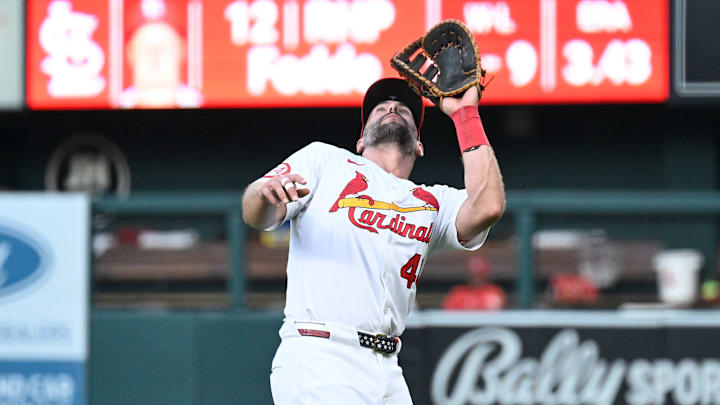The official kick-off to Major League Baseball's offseason is typically marked by the General Manager Meetings that are held in early November. While transactions of great magnitude don't often happen here, frameworks, players, and interest levels are gauged by rival GMs.
For the St. Louis Cardinals, the offseason started early. Gary LaRocque announced his retirement in September, Turner Ward was fired in early October, and president of baseball operations John Mozeliak has already laid out his succession plan with Chaim Bloom taking the reigns in 2026 and beyond.
By virtue of missing the playoffs, the Cardinals have been able to focus on the offseason and the 2025 season a bit earlier than other teams.
There is a cloud hanging over the front office this offseason, and it comes in the form of finances. With Diamond Sports Group dropping more teams this offseason while also being open to re-negotiating deals with pre-existing teams, there is a fear amongst ownership that the Cardinals will lose a fair amount of money they were expecting this offseason.
How much money are the Cardinals losing as a result of the Regional Sports Network kerfuffle?
According to reporting by Fox 2 News and Martin Kilcoyne, the Cardinals will lose approximately $66 million annually as a result of the bankruptcy situation with Bally Sports and Diamond Sports Group.
How much money is going out via free agency?
There are technically multiple answers to this question. J.P. Hill of Viva El Birdos did some calculations on the 2025 payroll, and there are two paths to go. If the Cardinals decline options on Lance Lynn, Kyle Gibson, and Keynan Middleton, their total guaranteed contracts come out to $115.2 million. If they accept the options on those three players, their payroll sits at $142.2 million. That's a $27 million difference.
Paul Goldschmidt, Andrew Kittredge, and Matt Carpenter are all free agents; their total salaries from 2024 account for just over $29 million. Combine that total with the player options, and the Cardinals will save a smidge over $56 million from 2024 on free agents alone.
If ownership's goal is to break even, they're still in the red by $10 million. Where will that difference come from?
That's were reports of the team looking to trade veterans comes in. Ryan Helsley, the Cardinals' resident closer, is projected to receive $6.9 million in 2025, Nolan Arenado is on the hook for $32 million next year, Willson Contreras's salary is $18 million, and Sonny Gray's salary goes up to $25 million. Trading any one of those four veterans will alleviate some financial strain.
What should fans expect in free agency?
With financials already tight, free agency may be a bit dull this offseason. The DeWitt family likely won't cut $66 million out of the payroll this offseason; that's not a viable way to run a baseball team. They will, however, look to keep payroll as low as possible. If Lynn, Gibson, and Middleton's options aren't accepted, and if the team trades away a pricey veteran, they could backfill those spots via free agency.
It's highly unlikely the Cardinals target big-name players like Corbin Burnes, Juan Soto, Alex Bregman, and even Max Fried. Rather, expect John Mozeliak to keep tabs on the second and third-tier players like Sean Manaea, Luis Severino, Jose Quintana, and J.D. Martinez. The 2025 roster will largely be comprised of internal players seeing promotions.
We as fans knew that payroll would be cut this offseason, but looking at financial data makes it clear that the Cardinals may have to do more cutting than initially expected as a result of the Diamond Sports Group bankruptcy. It's possible the Cardinals make up some of the lost money by re-negotiating or making their own TV package.
If that's the case, there exists a possibility the Cardinals retain their four big veterans while also filling in the roster with some free agents. Either way, expect the 2025 and 2026 rosters to be filled with internal, young players, and that may not be a bad thing after all.
